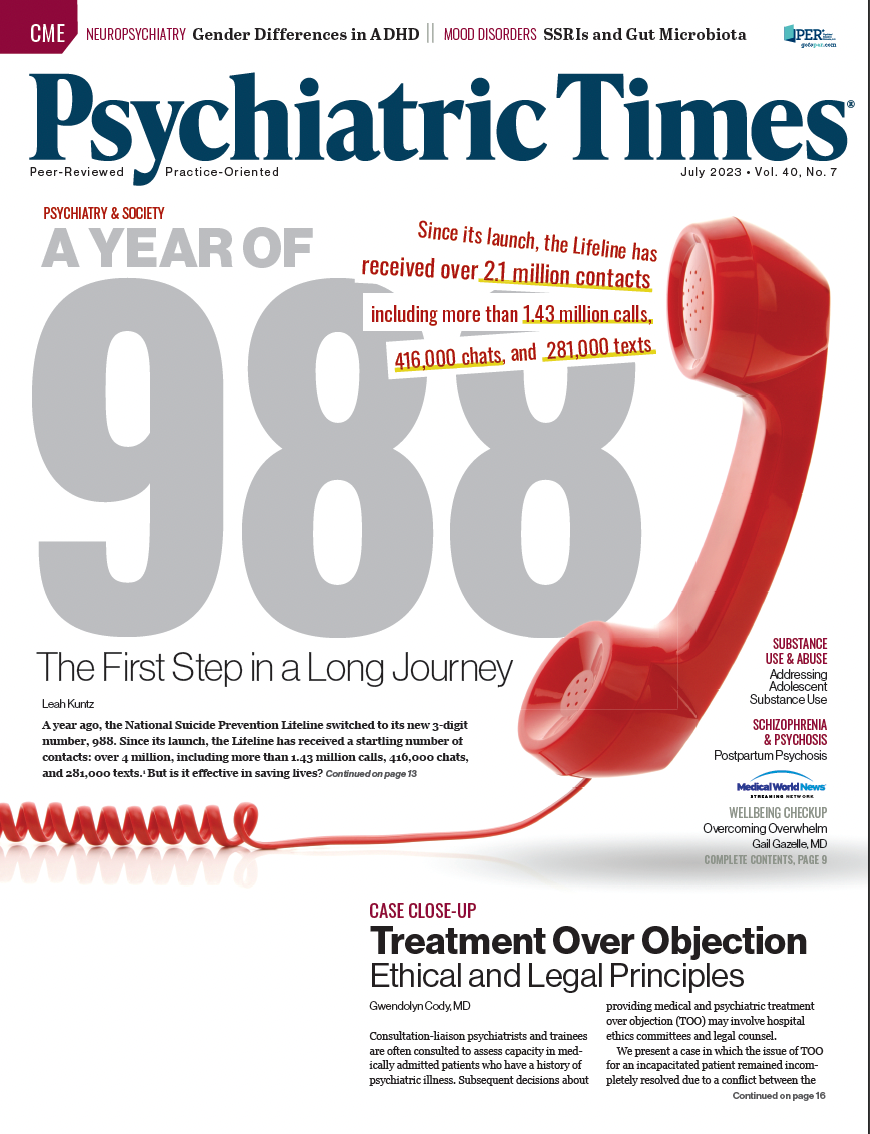Publication
Article
Psychiatric Times
A Year of 988: The First Step in a Long Journey
Author(s):
A year ago, the National Suicide Prevention Lifeline switched to its new 3-digit number, 988. What's happened since then?
Brian Jackson/AdobeStock
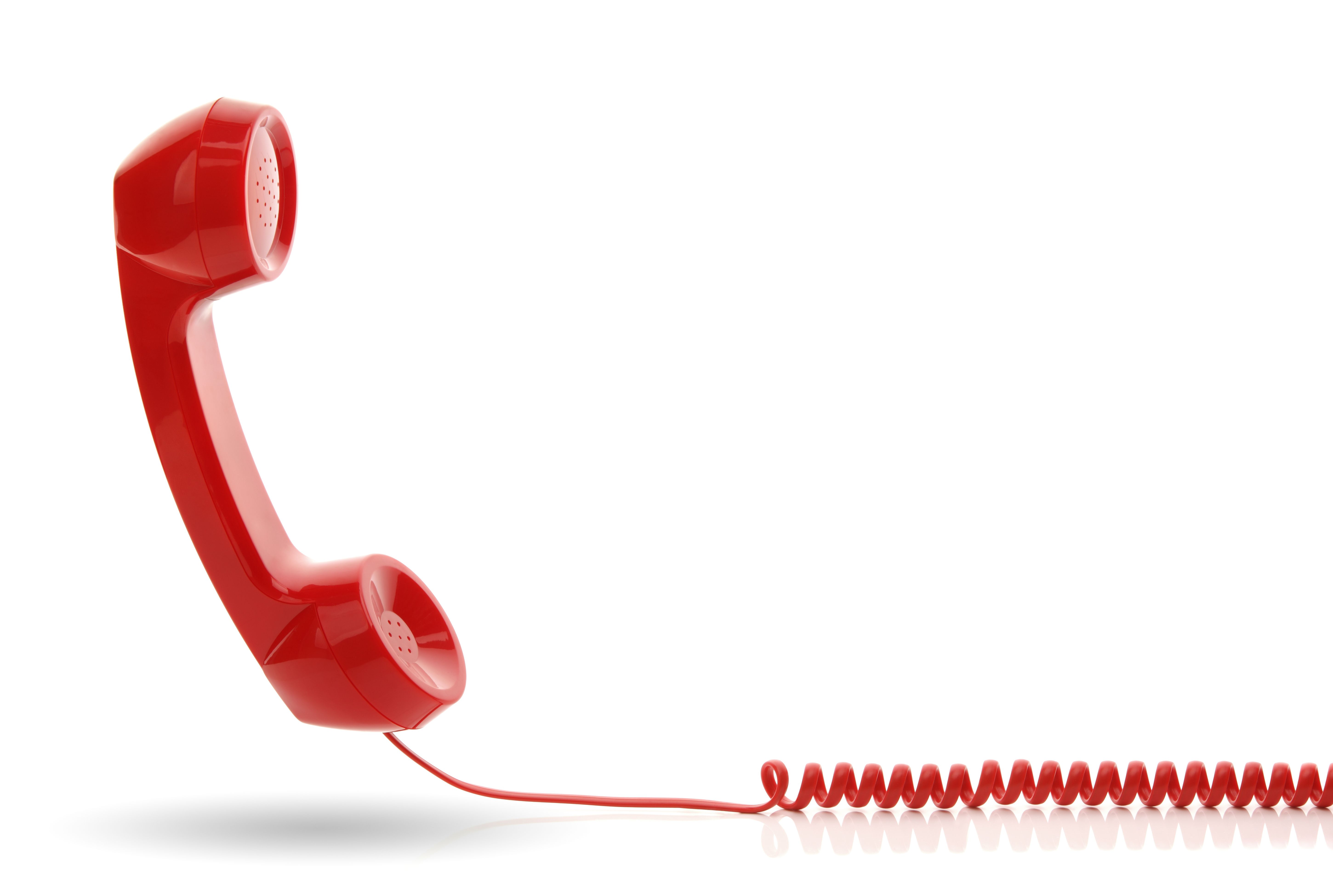
A year ago, the National Suicide Prevention Lifeline switched to its new 3-digit number, 988. Since its launch, the Lifeline has received a startling number of contacts: over 5 million, including more than 1.43 million calls, 416,000 chats, and 281,000 texts.1 But is it effective in saving lives?
“The transition to the 988 Suicide & Crisis Lifeline has sparked a transformational moment in behavioral health care in this country. For the first time in my 26-year career history, every state and territory is talking about improving their behavioral health crisis systems,” said Monica Johnson, MA, director of the 988 & Behavioral Health Crisis Coordinating Office at the Substance Abuse and Mental Health Services Administration (SAMHSA). “While we know that there is still much work to do to achieve a robust response system for mental health and substance use crisis care across the country, we have accomplished a lot in the past year. The data show that, since the transition to 988, more people are reaching out for help, and they are getting a response much faster than ever before to get the help that they need in a time of crisis.”
Figure 1. May 2023 Contacts
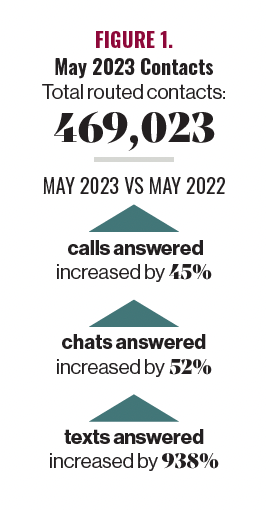
According to SAMHSA, the Lifeline receives an average of approximately 350,000 contacts per month. During May 2023 alone, contacts increased by more than 40% in calls, chats, and texts alike compared with the previous year (Figure 1).2
“We are seeing this increase in contacts, and I do not think that is a failure of the system; I think that’s showing it’s a success. Increasing numbers means that we might be catching some folks before they get to that terrible stage,” said Scott Zeller, MD, vice president of acute psychiatry at Vituity, assistant clinical professor of psychiatry at the University of California, Riverside School of Medicine, and Psychiatric Times editorial board member. “Anything we can do to reduce suicide is a win.”
Let’s take a look at the Lifeline, still in its infancy, and evaluate the current benefits and potential areas for improvement.
Decreased Wait Times
Figure 2. Monthly Comparison of Average Answer Speeds2
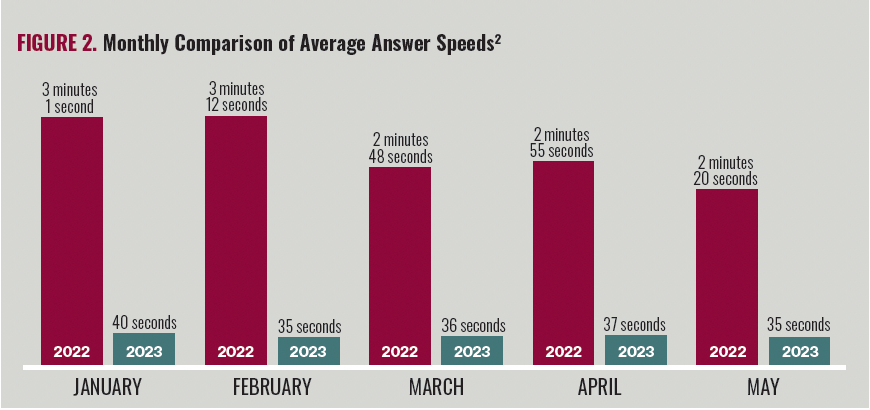
National overall answer rates have increased to 91% as of December 2022, compared with 64% from December 2021, meaning—no matter the outcome—more individuals in need of help are being connected to a counselor. Additionally, individuals who contact 988 are spending much less time waiting for a counselor; the average overall wait time decreased from 2 minutes and 52 seconds to just 44 seconds.1 Monthly average wait times are even shorter in 2023 (Figure 2).2
“Seconds count when somebody is in crisis. If someone finds themselves on a long hold, waiting for an answer, that could lead to frustration or hanging up the phone, and that is when bad things start to happen. The more quickly we can get them access, the better,” said Zeller.
According to research, 24% of suicide survivors aged 13 to 24 years said it took them less than 5 minutes between deciding to attempt suicide and trying.3 Data from another study showed that of 82 patients referred to a psychiatry department post suicide attempt, nearly half (47.6%) reported their suicidal deliberation lasted 10 minutes or less.4
Better Text Response
Prior to 988’s launch, the Lifeline could only sufficiently process 56% of the text messages and 30% of the chats received. In contrast, although text volume has now increased by over 700%,1 the text answer rate in May 2023 was an impressive 99%.2
Connecting via text may be more important to youth who contact the Lifeline. With the average teenager sending and receiving 5 times more text messages a day than a typical adult, this may be their preferred method of communication.5
“One of the biggest impacts that 988 is having, when you look at the data, is the dramatic increase of texting services,” said Margie Balfour, MD, PhD, chief of quality and clinical innovation at Connections Health Solutions and an associate professor of psychiatry at the University of Arizona. “You should be able to provide services in ways that people like to communicate, and it really shows that there was an unmet need in this area.”
Target Group Specificity
Figure 3. Lifeline Specialized Services
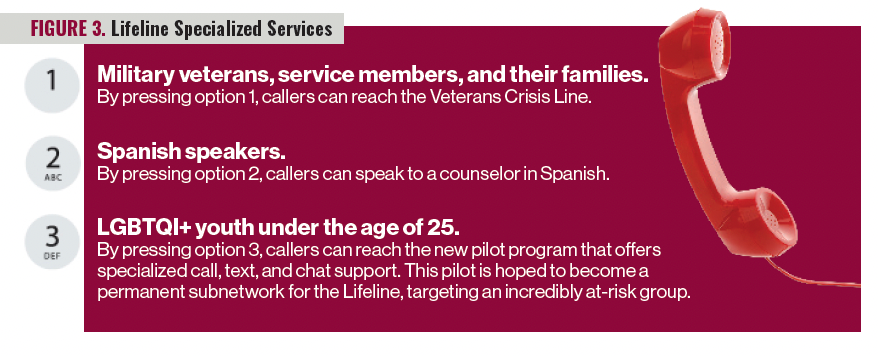
The Lifeline also now offers specialized services for various populations (Figure 3).
Other pilot programs are expected to follow, with potential Lifeline subnetworks for individuals who are hearing impaired and for American Indian/Alaska Natives.6
Area Code Issues
Ideally, 988 calls should be answered as locally as possible. A national backup crisis center handles any calls that local crisis centers cannot answer, but how exactly is an individual’s local center determined?
Unlike 911, 988 does not geolocate those who contact the Lifeline. Instead, 988 uses their area code to determine the closest call center.7 Unfortunately, this means if an individual living in New York has a Texas area code, the call center will be directed to the closest center in Texas, which will not be able to deploy a mobile team to a New York location.
Therein lies the problem. Although geolocation would help in providing localized services, some callers may not want their location to be known.
“I think there is a really good argument from the advocate side, saying ‘We do not want to be tracked.’ What if I just want to call and talk to you and say that I feel hopeless? It does not mean that I want you to know where I am to send cops, which is really what this all comes down to. There is not an easy solution here. Ethically and philosophically, this is one of the most interesting components of the 988 rollout so far,” said Tony Thrasher, DO, MBA, DFAPA, medical director of crisis services at Milwaukee County Behavioral Health Division, Wisconsin.
Lack of Quality Consistency
Every 988 call center is unique in how it responds to crisis callers. Some states had robust crisis lines prior to 988. Arizona, for example, is being looked at as an example model, Balfour told Psychiatric Times. Built on the backbone of Medicaid rather than telecommunication fees, this preexisting system has established trust in the community over the past 2 to 3 decades. However, some call centers do not have the privilege of a preexisting system.
“When you ask what happens when you call 988, in Arizona, you are going to get a crisis line that has been active for years. They have the infrastructure and resources to be able to dispatch 24/7 clinician mobile crisis teams, who can do interventions in the field and then resolve many of those crises. If needed, they can bring individuals to crisis stabilization centers, or crisis receiving centers that can then provide crisis care,” said Balfour. “If you call 988 in a community that does not have that… What actually happens is very local resource dependent. Different communities carry much different loads and are at different stages of development.”
Another example is Montgomery County, Ohio. Before the launch of 988, the county created Crisis Now, a 3-pronged approach to delivering crisis services that included a hotline and mobile response teams. In the initial 6 months of Crisis Now, 89% of calls to the hotline were resolved over the phone and 77% of the mobile crisis responses were resolved in the community. Upon 988’s launch in July, the already-in-place hotline also began taking local 988 calls, and felt better prepared to handle the switchover.8
Compare this with Hanover in York County, Pennsylvania. Prior to 988’s launch, the rural center, TrueNorth Wellness Services, reported difficulty hiring counselors and were uncertain they would be able to handle an influx of contacts.9
Uncertain Expectations
When you call 911, you know exactly what you are getting: an ambulance, a firetruck, or police, or maybe a combination depending on the situation. What do callers get when they call 988?
“It comes down to supply and demand,” said Thrasher. “What type of workers can each area find to respond to calls? There is a large push for less law enforcement presence and higher mental health presence. The hard part is, from a supply and demand focus, there are markedly more law enforcement workers, and they are paid significantly better than mental health workers. That is no knock on law enforcement—I think they earn what they get. But if we as a culture want to bring the mental health after-hours response 24/7, 365 days, on holidays, we need to pay them. One reason law enforcement and fire do that is because they are compensated to do so.”
To build these expectations, we must know:
- Who is running that response team?
- What is their supply and demand?
- What is their funding?
- Do they have enough funds to have a 24/7 mental health work?
The Need for More Funding
The federal government has invested close to $1 billion into the 988 Lifeline, including a little more than $500 million in the federal spending bill.10 In May 2023, the US Department of Health and Human Services announced an additional $200 million in new funding for states, territories, and tribes to build local capacity for the 988 Suicide & Crisis Lifeline and related crisis services.11
Figure 4. States With Enacted Legislation to Sustain 98812
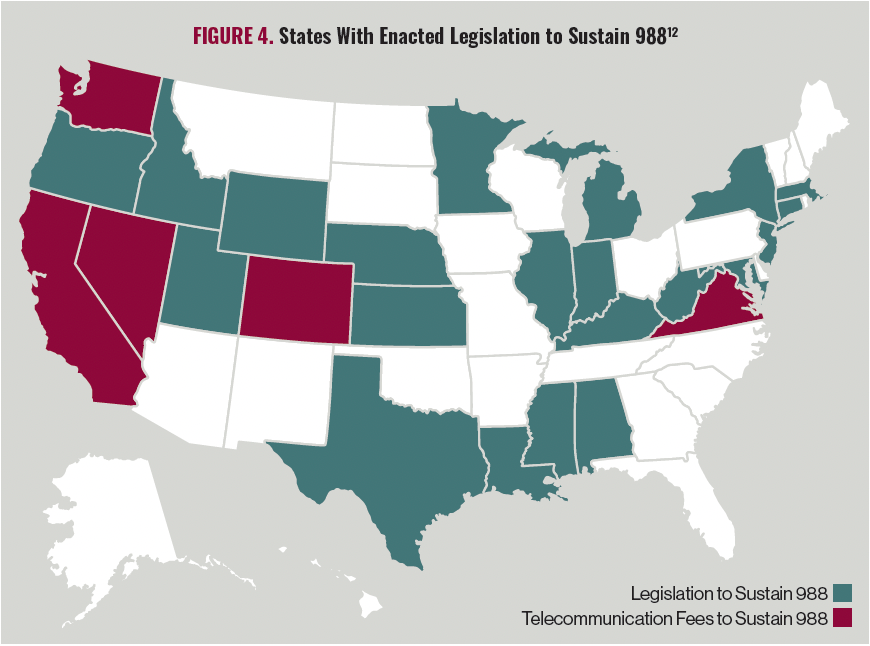
However, as contacts continue to pour in, some local Lifeline call centers may not be able to maintain their coverage when federal funding decreases. As of early June 2023, just 26 states had enacted legislation to maintain 988, and only 5 of those states had enacted legislation to sustainably fund 988 through telecommunications fees, as enabled by the National Suicide Hotline Designation Act of 2020 (Figure 4).12
“I think we need to have parity of these 4 services: fire, EMS, law enforcement, and mental health. To do so, they should all be in the same room and should all have the same sort of requirements of staffing and quality of care. But then we also must get the same degree of funding,” said Thrasher. “Mental health is not near those other 3 in anything resembling sustainable funding. The public does not see a mental health call like a fire or a police call.”
Looking Ahead
Comparisons are often made between 988 and 911. Notably, 911 took 13 years to reach a modicum of stability; the first 911 call was placed in 1986, but 911 was not designated the nationwide emergency telephone number until 1999.13 Furthermore, there are more than 5700 primary and secondary Public Safety Answering Points to answer 911 calls, as compared with approximately 200 988 centers.1,14 911’s success was not built in a year, and to expect otherwise for 988 is irrational. Our experts agreed:
“Emergency psychiatry is all about taking care of people in their most vulnerable moments on their worst days. 988 has now led to more access to services to help them with that, including services that do not necessarily culminate in the emergency department,” Thrasher told Psychiatric Times. “It is not to the scale that I think we want to see it yet, but it is a really good start.”
“It is a first step in what I think is a longer journey. It has been a catalyst for both the federal government and for communities to start to look at what we need,” said Balfour. “The promise of 988 is not there yet, but I think it is effective in getting us closer.”
In a Psychiatric Times online poll, 70% of responders said they had discussed 988 with their patients.15 Have you discussed 988 with patients or their families? Tell us about your experiences via PTEditor@mmhgroup.com.
Updated 7/13/23 to reflect new statistics.
References
1. Saunders H. Taking a look at 988 suicide & crisis lifeline implementation. KFF. February 23, 2023. Accessed May 31, 2023. https://www.kff.org/other/issue-brief/taking-a-look-at-988-suicide-crisis-lifeline-implementation/
2. 988 Lifeline performance metrics. SAMHSA. Accessed May 31, 2023. https://www.samhsa.gov/find-help/988/performance-metrics
3. Simon OR, Swann AC, Powell KE, et al. Characteristics of impulsive suicide attempts and attempters. Suicide Life Threat Behav. 2001;32(suppl 1):49-59.
4. Deisenhammer EA, Ing CM, Strauss R, et al. The duration of the suicidal process: how much time is left for intervention between consideration and accomplishment of a suicide attempt? J Clin Psychiatry. 2009;70(1):19-24.
5. Lenhart A. Part four: a comparison of cell phone attitudes & use between teens and adults. Pew Research Center. September 2, 2010. Accessed June 14, 2023. https://www.pewresearch.org/internet/2010/09/02/part-four-a-comparison-of-cell-phone-attitudes-use-between-teens-and-adults/
6. Stracqualursi V, Howard J. Forthcoming 988 suicide prevention hotline plans pilot program specifically for LGBTQ community. CNN. July 9, 2022. Accessed June 14, 2023. https://www.cnn.com/2022/07/09/politics/988-national-suicide-prevention-lifeline-lgbtq-subnetwork-wellness/index.html
7. 988 Geolocation Report — National Suicide Hotline Designation Act of 2020. Federal Communications Commission. April 15, 2021. Accessed June 14, 2023. https://docs.fcc.gov/public/attachments/DOC-371709A1.pdf
8. Six months after launch, how is 988 doing? National Association of Counties. January 13, 2023. Accessed June 14, 2023. https://www.naco.org/articles/six-months-after-launch-how-988-doing
9. Mencia A. Pennsylvania gears up for launch of new 988 mental health hotline. Axios Philadelphia. July 13, 2022. Accessed June 14, 2023. https://www.axios.com/local/philadelphia/2022/07/13/988-mental-health-hotline-pennsylvania
10. Chatterjee R. 988 Lifeline sees boost in use and funding in first months. GBH. January 16, 2023. Accessed June 14, 2023. https://www.wgbh.org/news/national-news/2023/01/16/988-lifeline-sees-boost-in-use-and-funding-in-first-months
11. HHS announces additional $200 million in funding for 988 Suicide & Crisis Lifeline. US Department of Health and Human Services. May 17, 2023. Accessed June 14, 2023. https://www.hhs.gov/about/news/2023/05/17/hhs-announces-additional-200-million-funding-988-suicide-crisis-lifeline.html
12. State legislation to fund and implement the 988 Suicide and Crisis Lifeline. National Academy for State Health Policy. Updated June 6, 2023. Accessed June 14, 2023. https://nashp.org/state-legislation-to-fund-and-implement-988-for-the-national-suicide-prevention-lifeline/
13. 911 and E911 Services. Federal Communications Commission. Accessed June 14, 2023. https://www.fcc.gov/general/9-1-1-and-e9-1-1-services#:~:text=The%20official%20emergency%20number%20in,States%20for%20all%20telephone%20services
14. 10 things you might not know about the United States’ 911 emergency telephone number. Walden University. Accessed June 14, 2023. https://www.waldenu.edu/online-masters-programs/ms-in-criminal-justice/resource/ten-things-you-might-not-know-about-the-united-states-911-emergency-telephone-number
15. What have you heard about 988? Psychiatric Times. May 25, 2023. https://www.psychiatrictimes.com/view/what-have-you-heard-about-988
